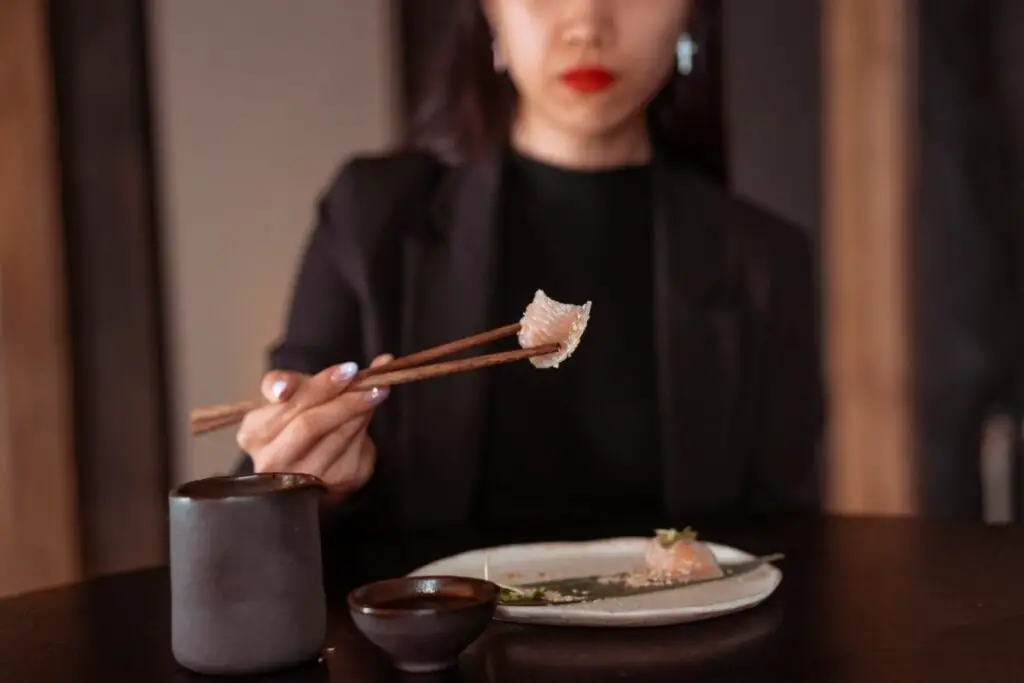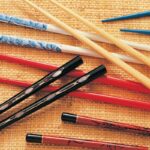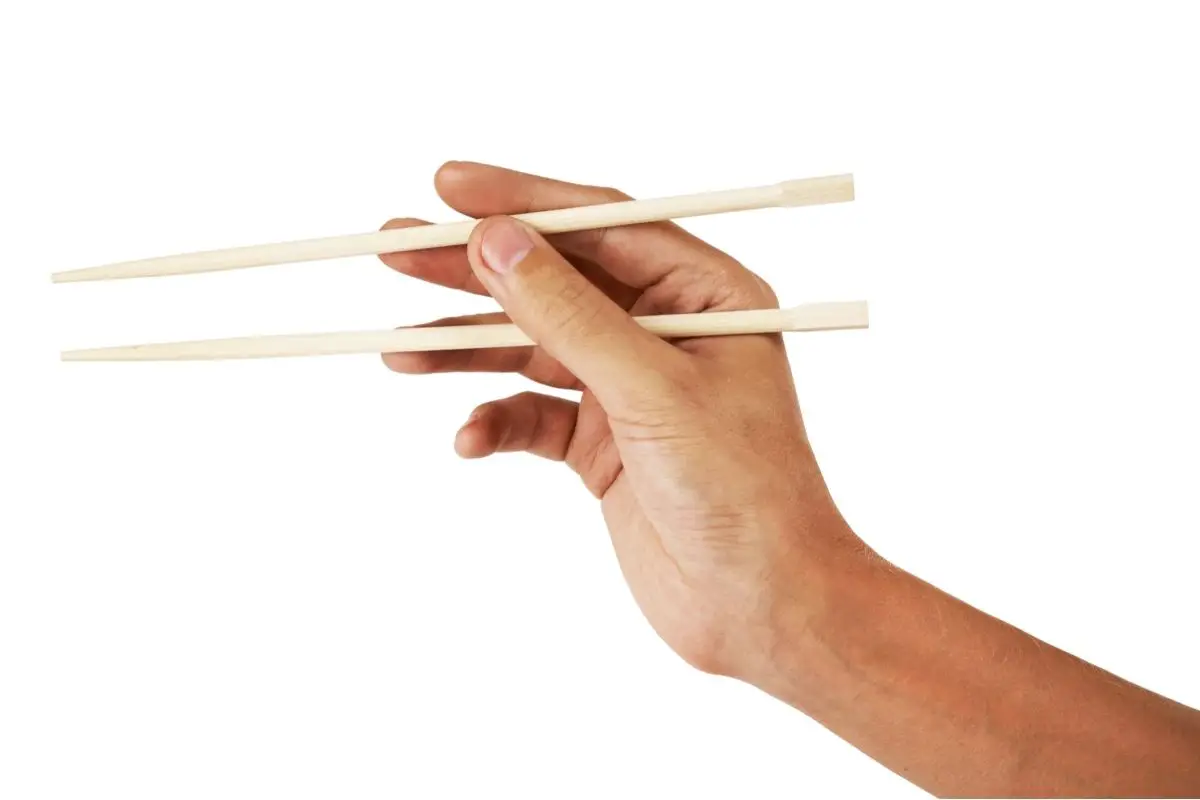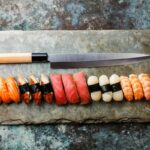Don’t be intimidated: chopsticks are incredible.
Sure, if you’re not experienced, they can be tricky to get to grips with, and they’re not always appropriate (don’t expect to eat your pizza with them!).
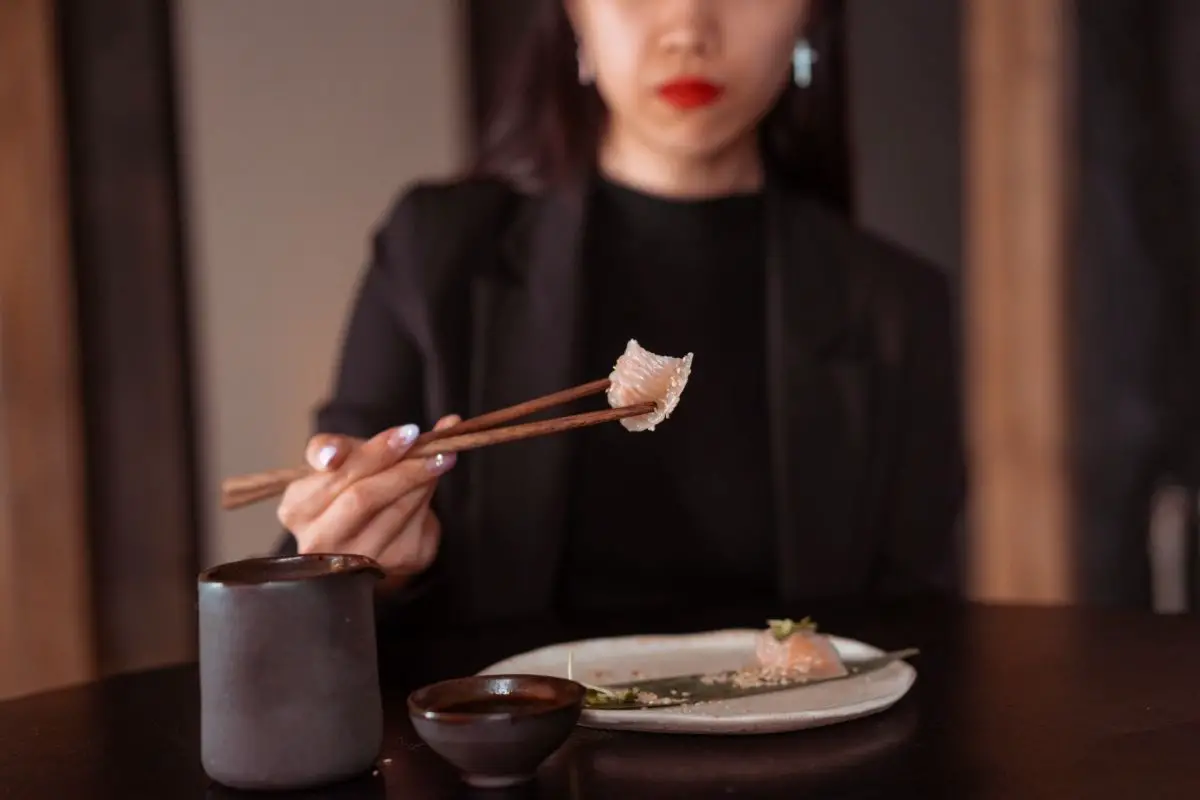
Once you master the art, though, you’ll find they’re actually quicker and easier to use than your average knife and fork. Plus, when you tuck into your meal, you’ll feel a LOT better knowing what to do.
Although there are some strict rules about eating with chopsticks, the truth is, you can tweak these to handle your chopsticks in whatever way feels comfortable.
Ready to learn more? Stick with us for a complete how-to guide on eating with chopsticks (see also ‘How To Hold Chopsticks‘).
How Do You Hold Them?
If you’re inexperienced with chopsticks, this might be the burning question. How exactly do you hold them?
Well, although you can hold your chopsticks however you like, there are a few specific tips and tricks to make the process easier.
As a general rule, you should be holding one chopstick in your dominant hand, resting between your index finger, middle finger, and thumb. When you move the chopstick around, your thumb should remain still.
To start off, put the chopstick in your hand, and allow it to lay on your ring finger. Then, wrap the top part of your middle finger around the chopstick. You should then place your thumb on the chopstick for extra support (see also, ‘How to Use Chopsticks for Kids‘).
Note: The best way to learn this is to practice BEFORE eating a meal. Start practicing by holding just one chopstick and moving it in your hands. If your thumb remains stationary, you’re holding them the right way.
Non-Dominant Hand
Now you’ve mastered the art of holding one chopstick; it’s time to get the second chopstick involved.
To use the second chopstick, you’ll need the help of your non-dominant hand. Place the second chopstick between your thumb, forefinger, or pointer finger. Use your non-dominant hand to get the chopstick (see also, ‘How to Use Chopsticks Left Handed‘) into the right position.
Etiquette
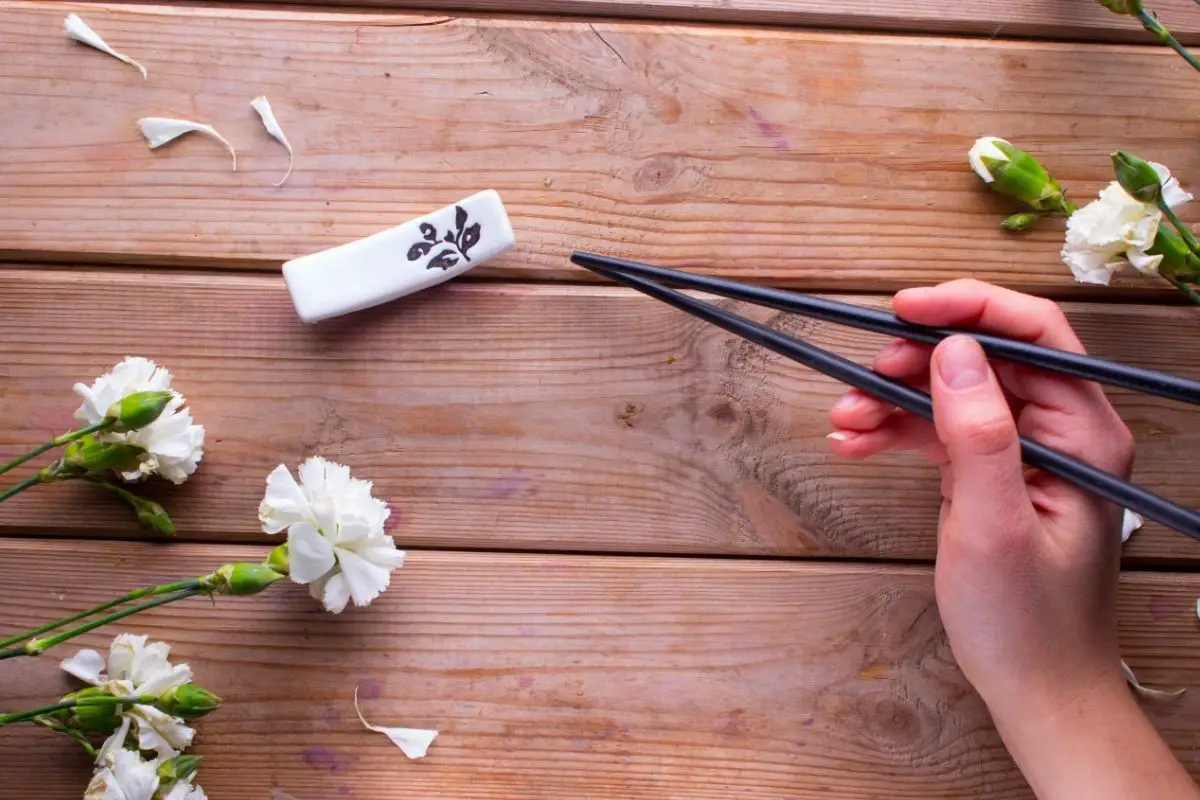
Chopstick etiquette varies from culture to culture, but there are a few general rules that you should be following.
Generally speaking, you shouldn’t use your chopsticks to pierce your food like a fork. If you can handle chopsticks correctly, you’ll be able to pick up whole chunks of food in one go and rest them between the chopsticks.
However, if this is easier to do when you’re starting, then do whatever makes you feel comfortable!
One big taboo that should always be avoided is placing your chopsticks in an upright position in your rice because the position resembles the use of incense sticks to revere loved ones who have passed away. Doing this during a family meal could be considered disrespectful or upsetting.
Use A Chopstick Rest
If you want to use your chopsticks by the book, always use a chopstick rest. In Japan, it’s impolite to place your chopsticks over your bowl when you’ve finished eating.
If you’re practicing your chopstick etiquette before you go to a Japanese restaurant, and you’re not sure what you’ll be expected to do with your chopsticks, fear not. If these chains want you to follow chopstick etiquette to a T, they’ll provide you with a rest or hashioki.
These are used to keep your chopsticks clean and separate from your food, and to display your sophistication to your dinner guests.
Are you using disposable chopsticks? If you find a chunk of wood at the end of your chopsticks, snap it off, and use it as a hashioki! Many fast-food chains or takeaway delivery services will offer these.
Chopsticks: A Buyers Guide
Are you buying your first set of chopsticks? Not sure where to start? Let us help. There are a few different materials out there, the most common being bamboo, plastic, and metal.
Bamboo Chopsticks
Bamboo chopsticks are considered the most ‘traditional’ chopsticks on the market. If you eat at a Chinese or Japanese restaurant, these are the chopsticks you’ll probably get given.
Bamboo chopsticks are usually pretty sturdy, and most beginners find them the easiest chopsticks to learn with. If you want to make a more ethical purchase, they’re also better for the environment than plastic alternatives!
Plastic Chopsticks
Plastic chopsticks can be harder to handle. They’re still often offered at restaurants or takeouts, but we recommend steering clear if you’re a beginner.
If you’re eating sushi for example, plastic chopsticks can get very slippery very quickly. Plastic chopsticks are naturally smooth and have little to no grip, making handling food much tougher.
So if you’re using your chopsticks to grip heavier foods, there’s also an increased risk of breakage – and let’s face it, no one wants to make a mess at meal times!
Metal Chopsticks
If you’re eating at a Korean restaurant, you’ll probably be given metal chopsticks. Koreans favor metal chopsticks because they’re considered cleaner, and they’re ideal for eating food directly off a Korean BBQ table.
Most Korean food is served off of heated hot pots or iron plates (see also ‘How to do Kintsugi‘). Metal chopsticks are less likely to melt than plastic or bamboo alternatives. However, you may find metal chopsticks harder to use. Although they’re sturdier than other chopsticks, they can feel more uncomfortable to hold.
If you’re a complete beginner, we recommend learning with bamboo chopsticks and slowly working your way up to using metal chopsticks when you feel comfortable.
Final Thoughts
Chopsticks are one of the most versatile utensils in the world. A fork, knife, and tongs all in one; what’s not to love!?
They may be an incredible invention, but to Westerners unfamiliar with the practice, eating with them can be hard. If you follow our tips and tricks, you’ll be a chopstick guru in no time.
Start by practicing your technique, and when you’re ready, try it with food. Then, with a little bit of patience, you’ll be surprised just how easy it is to use chopsticks!

